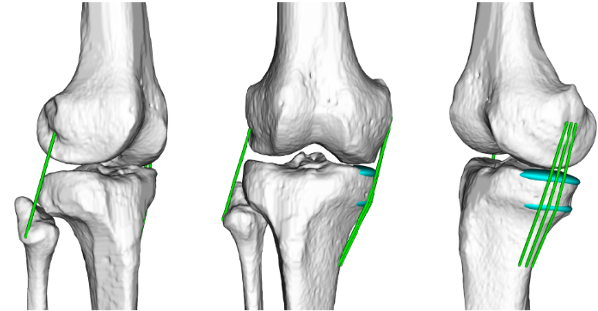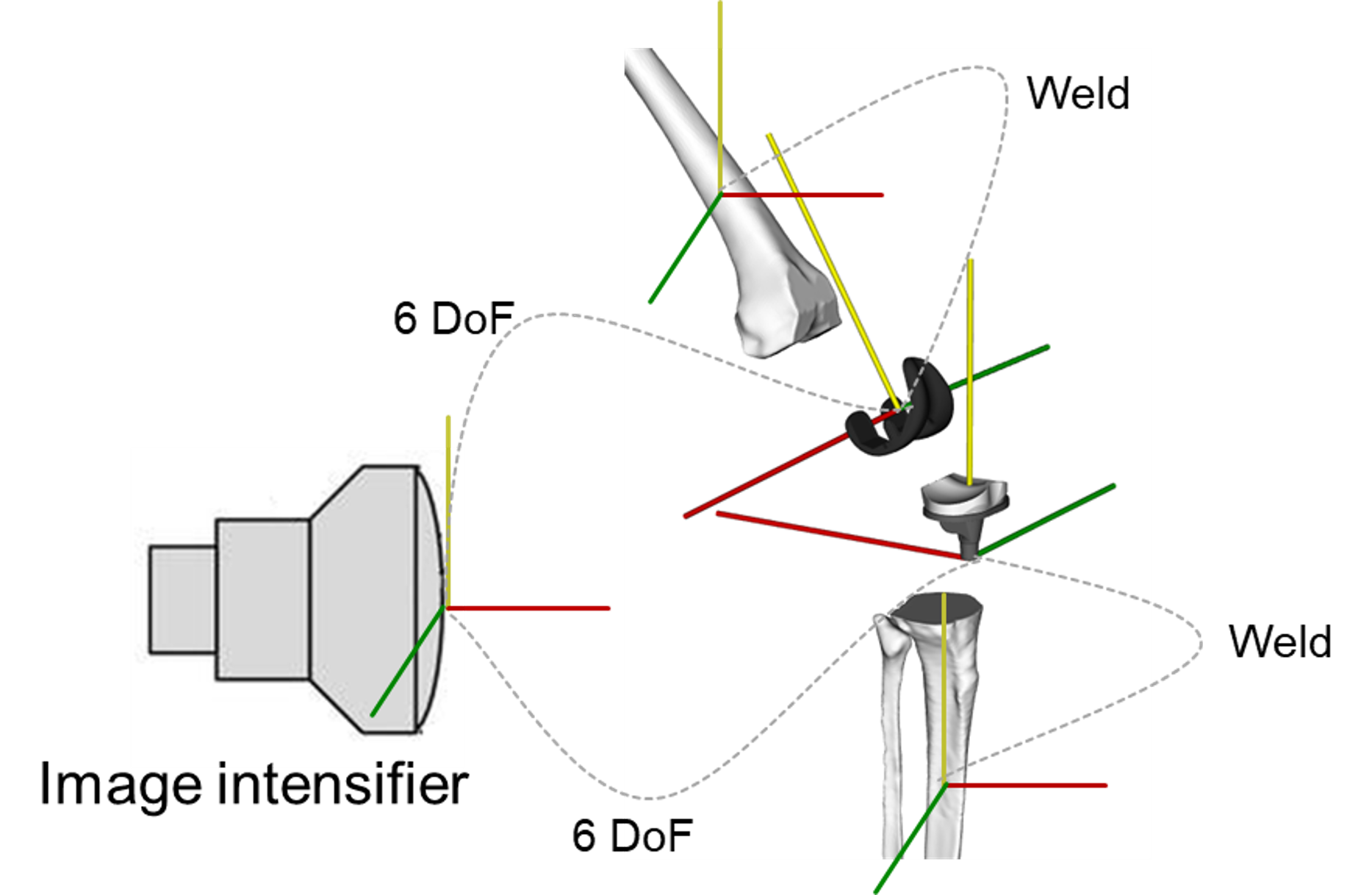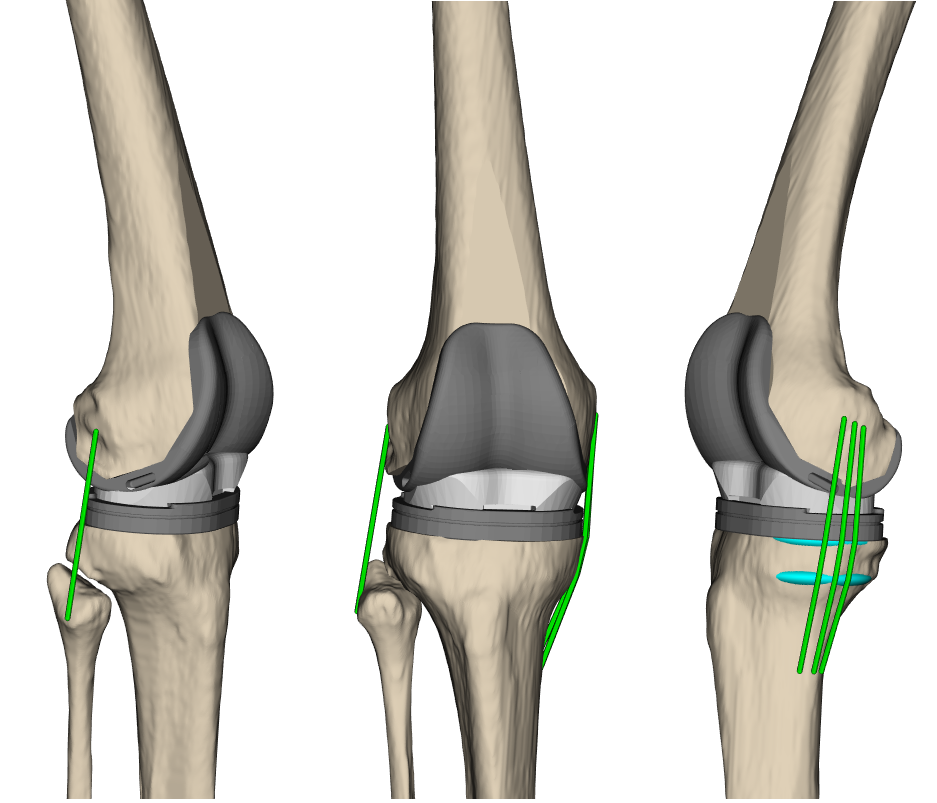Fluoroscopic assessment of ligament elongation patterns
Background
A thorough understanding of the strain patterns experienced by knee ligaments is crucial for improving outcomes of surgical ligament reconstruction and total knee arthroplasty. However, such knowledge is extremely limited due to ethical and technical difficulties of studies assessing the in vivo ligament function using implantable strain sensors.
Goal
We aim to combine multibody modelling and video-fluoroscopy to enable non-invasive assessment of ligament strain patterns during dynamic activities.
Method
We used our unique moving fluoroscope to accurately measure 3D kinematics of the natural and implanted knee during functional dynamic activities. The obtained kinematics are then used to run subject-specific multibody knee models and thereby calculate the relative displacements of ligament attachment sites to estimate the ligaments elongation patterns.
The method was used to investigate ligament length-change patterns in healthy and implanted knees. In particular, the influence of implant design and activity type on the function of knee ligaments after TKA were assessed.
Contact
Professur f. Bewegungsbiomechanik
Gloriastrasse 37/ 39
8092
Zürich
Switzerland





